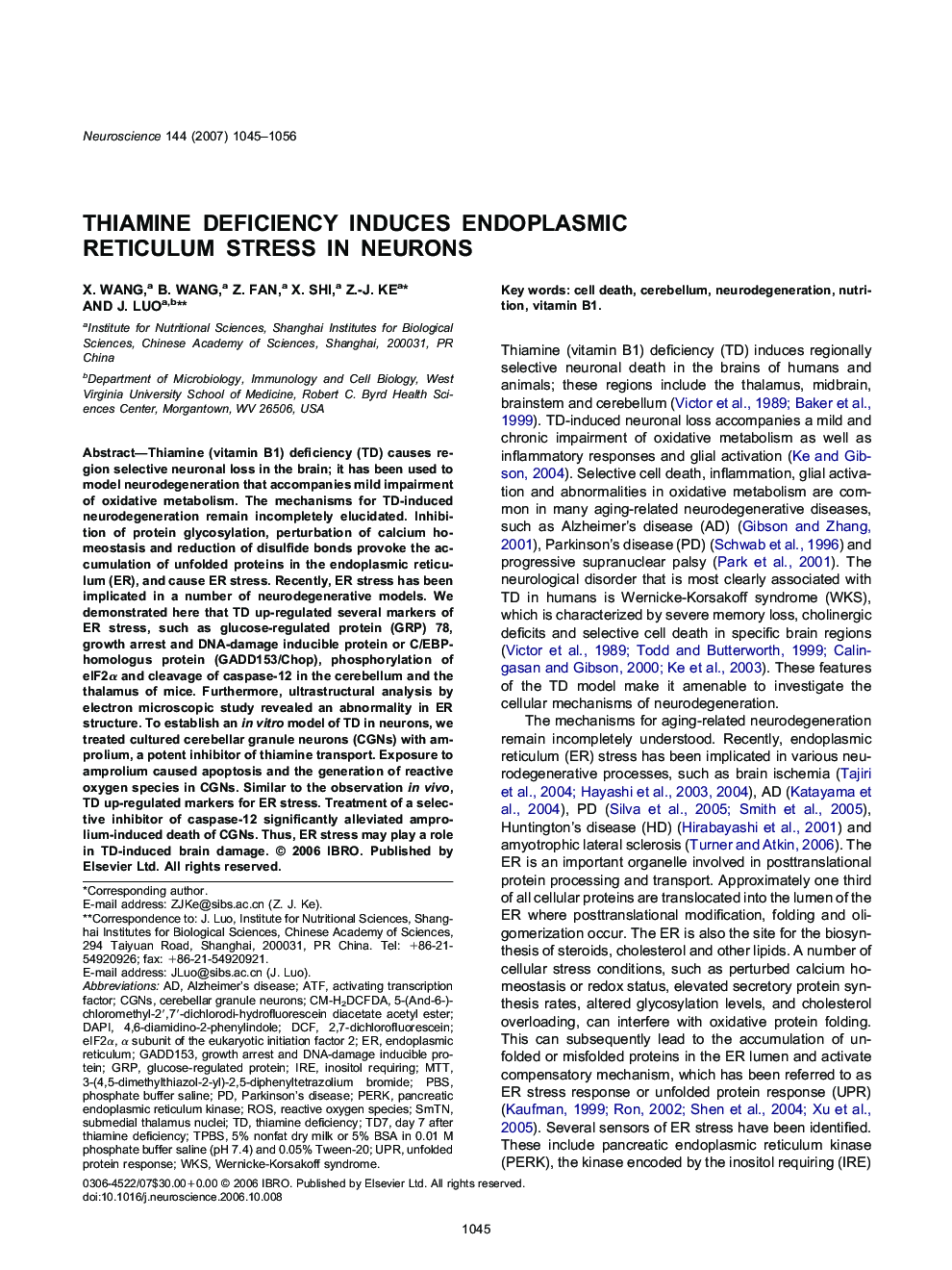| Article ID | Journal | Published Year | Pages | File Type |
|---|---|---|---|---|
| 4341310 | Neuroscience | 2007 | 12 Pages |
Abstract
Thiamine (vitamin B1) deficiency (TD) causes region selective neuronal loss in the brain; it has been used to model neurodegeneration that accompanies mild impairment of oxidative metabolism. The mechanisms for TD-induced neurodegeneration remain incompletely elucidated. Inhibition of protein glycosylation, perturbation of calcium homeostasis and reduction of disulfide bonds provoke the accumulation of unfolded proteins in the endoplasmic reticulum (ER), and cause ER stress. Recently, ER stress has been implicated in a number of neurodegenerative models. We demonstrated here that TD up-regulated several markers of ER stress, such as glucose-regulated protein (GRP) 78, growth arrest and DNA-damage inducible protein or C/EBP-homologus protein (GADD153/Chop), phosphorylation of eIF2α and cleavage of caspase-12 in the cerebellum and the thalamus of mice. Furthermore, ultrastructural analysis by electron microscopic study revealed an abnormality in ER structure. To establish an in vitro model of TD in neurons, we treated cultured cerebellar granule neurons (CGNs) with amprolium, a potent inhibitor of thiamine transport. Exposure to amprolium caused apoptosis and the generation of reactive oxygen species in CGNs. Similar to the observation in vivo, TD up-regulated markers for ER stress. Treatment of a selective inhibitor of caspase-12 significantly alleviated amprolium-induced death of CGNs. Thus, ER stress may play a role in TD-induced brain damage.
Keywords
SmTNUPRCGNseIF2αDAPIGRPATFIREGADD153DcfCM-H2DCFDA2,7-dichlorofluoresceinPBSTPBSWernicke-Korsakoff syndromewks3-(4,5-dimethylthiazol-2-yl)-2,5-diphenyltetrazolium bromide4,6-diamidino-2-phenylindoleMTTROSAlzheimer’s diseaseParkinson’s diseaseNutritionNeurodegenerationendoplasmic reticulumphosphate buffer salineactivating transcription factorCerebellumCell deathcerebellar granule neuronsVitamin B1Unfolded protein responseglucose-regulated proteinPERKthiamine deficiencyReactive oxygen species
Related Topics
Life Sciences
Neuroscience
Neuroscience (General)
Authors
X. Wang, B. Wang, Z. Fan, X. Shi, Z.-J. Ke, J. Luo,
